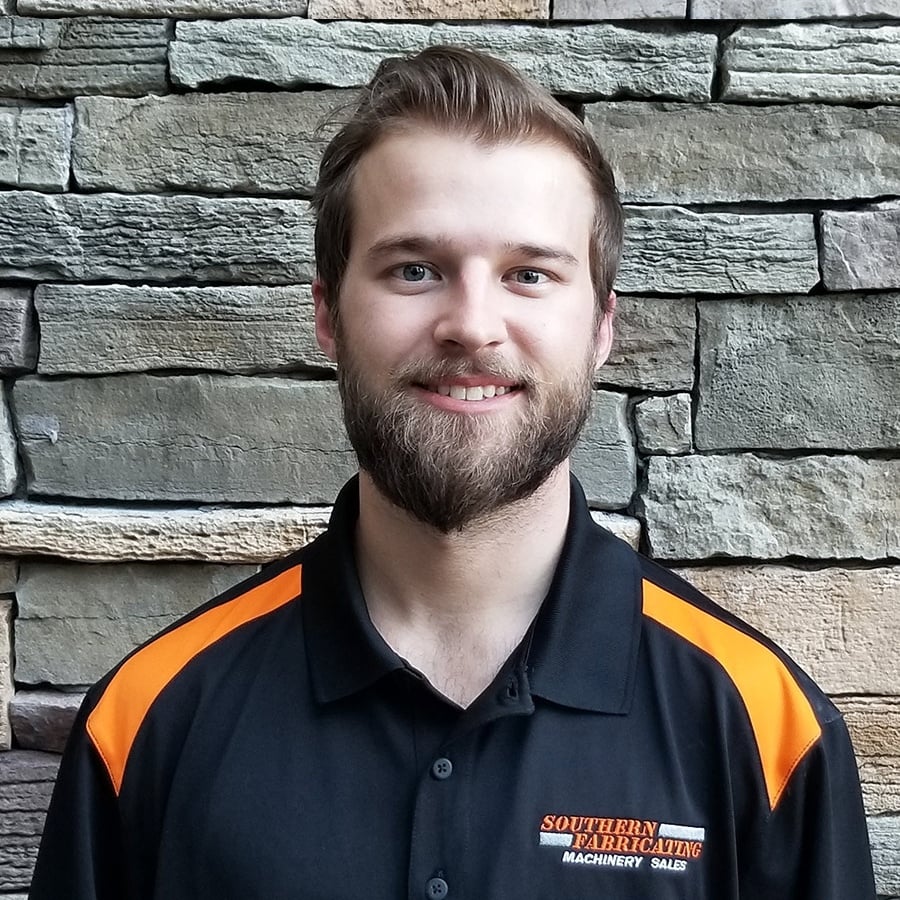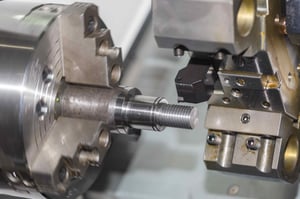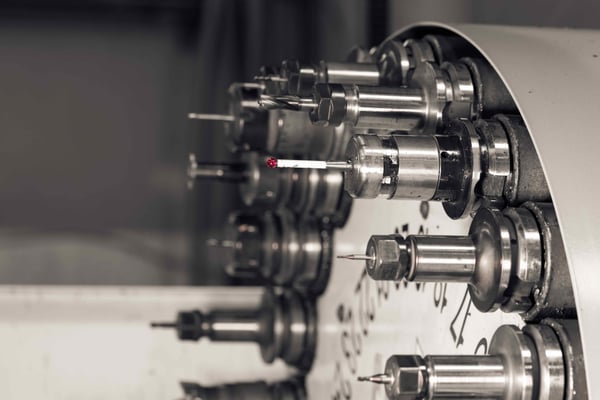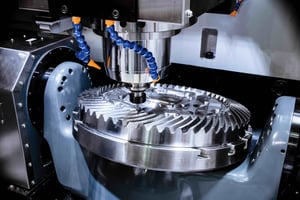
Posted By: Dylan McCarty | Posted On: August 9, 2018
The Difference Between CNC Milling and CNC Turning
To the untrained eye, it can often be difficult to understand the different types and actions of CNC machinery. Knowing the differences between CNC Turning and CNC Milling will ultimately lead to making the best purchase for your application, yielding better and faster part production.
From the outside looking in, these two processes seem quite similar (i.e. removing metal). But, in many ways, they differ greatly in how they operate to complete the desired part.
CNC Turning
CNC Turning Machines are one of the oldest and simplest forms of machining parts, called “lathes,” and can be either horizontal or vertical depending on the weight and tolerance of the workpiece. The primary function of a CNC Turning Center is that it rotates (or “turns”) your workpiece. Workpieces for this process are usually round, but can be other shapes — like squares or hexagons.
The workpiece is held in place by an instrument known as the “chuck.” The chuck then spins at various RPMs (depending on the capability of your machine). When this occurs, the machine’s tool moves into the rotating workpiece and begins to shave away material to create the desired shape.
 This picture perfectly illustrates all of the aforementioned components. The cylindrical part on the left is the chuck, which acts like the bit holder on your everyday handheld drill, to hold in the workpiece (which, in this example, looks like a screw end). On the right side of the picture, we have the Tool. This part of your CNC Turning Machine moves back and forth into the workpiece to cut the material into your desired shape.
This picture perfectly illustrates all of the aforementioned components. The cylindrical part on the left is the chuck, which acts like the bit holder on your everyday handheld drill, to hold in the workpiece (which, in this example, looks like a screw end). On the right side of the picture, we have the Tool. This part of your CNC Turning Machine moves back and forth into the workpiece to cut the material into your desired shape.
The first lathes were manually operated by a series of turn wheels that were controlled by the machinist. These turn wheels moved the chuck while holding the workpiece to create back and forth motion into the tool for cutting. Manual mills were also operated by turn wheels that moved the spindle up and down or back and forth into the workpiece.
Today’s CNC Turning and CNC Milling machines are numerically controlled and operate without the constant supervision and adjustment of the turn wheels by the operator. Modern machines also have various types of tooling options, spindle options, as well as speed and power capabilities. Oftentimes, these machines have tool holders equipped, which hold many tools of different sizes and shapes for various applications depending on the complexity of the part. This picture shows a tool holder that rotates around until the right tool is in place to begin the operation:

CNC Milling
Milling is a more specific process that is similar to drilling and cutting. The primary function of a CNC Milling Machine is that your tool will be doing the rotating and moving while your workpiece stays in one spot (generally). These machines can also be either horizontal or vertical, again depending on the tolerance and weight of your workpiece. This process has many axes that allow for a variety of shapes, holes, and slots to be cut into the workpiece at many angles. These axes provide many different maneuvers, either by the spindle or the bed, to cut the part desired to the exact specifications.
 In this picture, we have a CNC Milling Machine with all the aforementioned components as well. The top part is the Spindle, which holds the Tool. This part spins at high RPMs and moves back and forth, left and right, up and down (depending on the number of axes your machine has) to mill away the material.
In this picture, we have a CNC Milling Machine with all the aforementioned components as well. The top part is the Spindle, which holds the Tool. This part spins at high RPMs and moves back and forth, left and right, up and down (depending on the number of axes your machine has) to mill away the material.
The workpiece, which in this case seems to be a gear or clutch, is held in place by the bed. Some CNC Milling Machines have the capability to move the bed in conjunction with the spindle to attain specific shapes at certain degrees. Because of these capabilities, CNC Milling offers cutting solutions for more complex parts, like engine components, custom tooling, intricate mechanisms and enclosures.
For more information on these machines or any others, check out more of our blogs on Southern Fab’s website or give us a call! Our salesmen are highly knowledgeable and can answer any of your questions to help you make the best decision for your next machine purchase.

dylan@southernfabsales.com | 813-444-4555 x113







